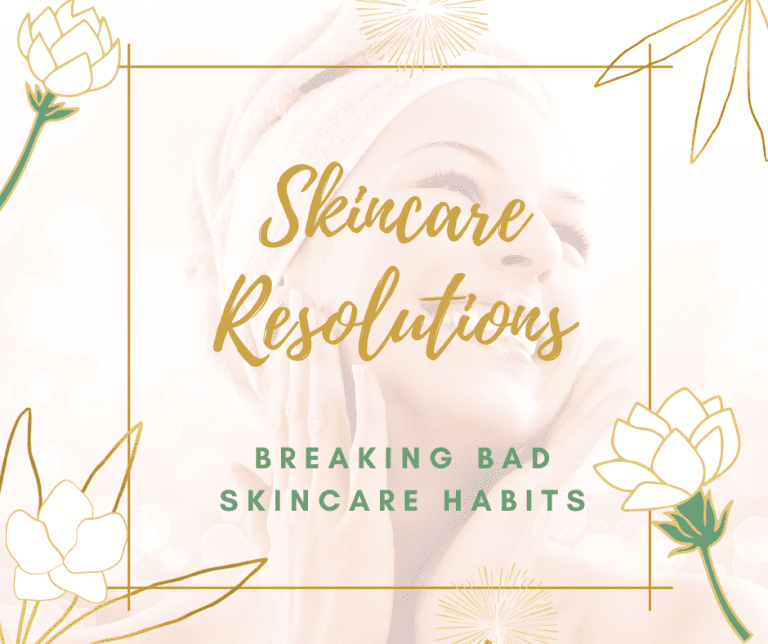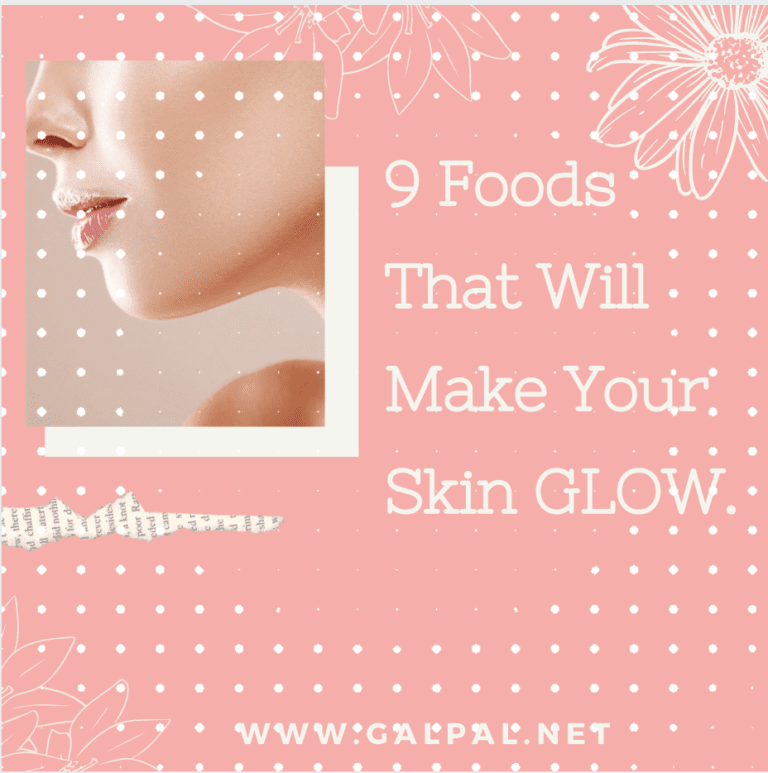The Best Ways to Keep Your Dry, Flaky Skin Smooth and Hydrated
So What Causes Dry Skin And How Do I Fix My Dry Skin Issue?
If you’re reading this article, you (or someone you know) probably has dry skin. Dry skin is usually genetic: your skin simply produces less sebum. Sebum is a lubricant, or natural oil, secreted by your sebaceous glands that traps moisture beneath it to keep skin hydrated.
We all have our goals and skincare resolutions for this year, so here is some ideas for those of you who suffer from dry skin.
But wait, you might be thinking, I thought sebum caused acne, or was bad in some way. You’re partially right, because people with very oily skin have sebaceous glands that produce too much sebum, and this type of skin is more prone to acne. But too little sebum isn’t great, either, because just like Goldilocks, you need the “just right” about of sebum—not too little, not too much—to seal in moisture without excess grease and shine. Whether you’re young or old, regardless of what kind of skin you have, maintaining the right balance of moisture is absolutely vital for healthy, glowing skin. Hydrating skin is key.
Before we dive into the best moisturizing ingredients for dry skin, it’s important to eliminate any environmental causes, and any issues that should be addressed by a dermatologist or other healthcare professional.
Environmental/Health-Related Causes of Dry Skin:
– cold weather
– dry air
– lots of plane travel
– exposure to harsh chemicals in soaps or other products
– excessive face washing
– smoking
– spending too much time in the sun
– the following conditions: dermatitis, psoriasis, diabetes, and hypothyroidism
Cold weather and dry air are climate-related, so unless you have a job and a lifestyle that allow you to migrate south like a bird, there’s probably not a whole lot you can do about your location, and you can simply use heavier, more hydrating moisturizers to compensate (same deal with plane travel). Likewise, if you have any of the health conditions mentioned above, please see a doctor and get expert advice on the right treatment plan. A great moisturizer will probably still help you, but the underlying conditions need to be treated as well for your dry skin to completely resolve.
On the other hand, sun exposure, chemical exposure, and excessive washing are all behaviors that you can change right away, so here’s what to do:
- Limit sun exposure between 10 a.m. and 2 p.m. And no matter how much sun exposure you get, and whether your skin is dark or fair: wear SPF 30 to 50 on your face every day.
- Don’t put any of the following harsh/drying agents on your skin: bleach, rubbing alcohol, or witch hazel. It’s also a good idea to avoid dyes, fragrances, parabens, pthalates, and SLS (sodium lauryl sulfate). These ingredients and chemicals, found in many skincare products, should be avoided and, if your skin is dry you should be especially careful to avoid any potential irritants, as dry skin is more easily irritated and these can cause itchy skin as well as other unwanted skin conditions.
- Wash your face only once a day in the evening with a gentle cleanser, pat dry with a light touch, and apply a thick night cream within 60 seconds (to trap in moisture before it evaporates).
Sleep with a humidifier in your room. This will emit moisturize into dry air and you will wake with more hydrated skin. - Avoid taking hot showers. Hot water dries face and body skin causing redness, irritation and itchy skin. Warm water is best for skin and will open pores, prepping it for a gentle cleanser.
Your Cleanser Should Also Moisturize
If you have dry skin, you want to use the gentlest possible cleanser with the simplest ingredients (again: avoid anything with alcohol, fragrances, parabens, pthalates, and sulfates). Every time you wash your face, you strip away a little of its natural sebum, so people with dry or very dry skin really only need to wash their skin once a day (see above for how). The best cleansers for people with dry or very dry skin will have a creamy consistency, and shouldn’t foam—it may feel a bit like you’re washing with a lotion. This is intentional—instead of stripping your skin, they’re leaving a layer of moisture, so your moisturizer doesn’t have to do all the work. Dry skin is also prone to flaking, so a gentle, non-abrasive exfoliating scrub can be part of your skincare routine once a week or as needed.
Keep your products clean! Chemicals and toxins are trouble for our skin. Read more about the dirty truth about the toxins in our skincare products.
You Really Need 2 Moisturizers
That’s right: a day moisturizer that you apply in the morning, and a night cream that you put on before bed. While it’s true that all moisturizers work in the same basic way— they supply a little bit of water along with some sort of fatty, oily, or greasy substance that holds the water in—the other functions of a day crema and night cream are very different. You (and your skin) do different things during daytime and nighttime, so each moisturizer targets different skincare needs.
Moisturizer #1: SPF Day Cream
Your day cream should protect your skin from the sun’s UV rays, as well as hydrate and protect it from outside aggressors (pollution, light from screens and computers, etc) all day. To do these jobs effectively, your day cream should have SPF 30 to 50, moisturizing agents to keep skin hydrated, and antioxidants to fight environmental stress. To emphasize one last time how important it is to make sure your day cream has SPF, consider this sobering fact: sun exposure causes most of the skin changes that we think of as a normal part of aging. Eeeek.
Moisturizer #2: Night Cream
Your night cream should be thicker than your day cream, and its main job is to deeply moisturize and repair your skin while you sleep. Ideally, the main thing you’re doing at night is sleeping 8-9 hours, because sleep is when your whole body repairs itself, and your skin is no exception. A night cream with the right ingredients will maximize this process so that every morning, your skin feels dewy, soft, and rejuvenated. Apply your night cream (and any anti-aging serums or under-eye creams) about 15 minutes before lying down—that way, it can all be fully absorbed before you’re in dreamland.
The Absolute Best Moisturizing Ingredients For Dry Skin
Here’s our breakdown of what humectants, emollients, and occlusives are, and what roles they play in keeping skin hydrated. We’ve listed the best kinds of each for dry skin, so be sure to look for these on ingredient labels.
Humectants
Humectants draw water from the environment into your skin, which makes them particularly effective moisturizers and a must-have for dry skin. Look for the following in your cleansers and moisturizers.: glycerin, hyaluronic acid, amino acids (urea), aloe vera gel, ceramides, alpha hydroxy acids (AHAs—these include glycolic acid and lactic acid) and salicylic acid.
You might be wondering about the amino acids, AHAs and salicylic acid, because these are also used to slough off dead skin cells. Well, they multitask! These acids, (used in a lower concentration if your skin is very dry or irritated) are excellent mild exfoliants, but they also draw water to your skin. A win-win.
Emollients
Emollients are generally oil-in-water or water-in-oil preparations. These are moisturizing elements that soften and smooth the uppermost layer of skin cells. As they spread over the skin, filling in miniscule cracks between cells, they help restore the skin barrier — which helps moisture stay put.
Great emollients for dry skin include: silicones, fatty acids (glycerides, sterols, and phospholipids, omega-3 and omega-6), squalene, non-fragrant oils (see antioxidants below), colloidal oatmeal, and plant butters such as shea butter, cocoa butter, and jojoba butter.
Antioxidants (many of these also act as emollients): coconut oil, borage seed oil, argan oil, evening primrose oil, sunflower seed oil, cranberry seed oil, green tea extract, grape extract/resveratrol, vitamin C (L-ascorbic acid), vitamin E (sometimes called tocopherol), ferulic acid, quercetin, willow herb extract, feverfew extract, and licorice extract.
All of the above antioxidants can be added to day or night creams. We’d lean slightly toward using the plant oils at night, either in night creams or applied right before your night cream. The rest of the ingredients make excellent additions to day creams—especially vitamins C, E, and ferulic acid. Ferulic acid works to boost the activity of any other antioxidant you apply, so it’s a great addition. And all of these antioxidants brighten and soothe your skin, and help protect it from outer stressors.
Occlusives
Certain emollients are also “occlusive agents”—meaning they provide an even thicker layer of protection, acting as a physical barrier to prevent water loss from the skin’s surface. Common occlusive agents include waxes (carnauba and beeswax), silicone, oils (olive and soybean), dimethicone, and white petrolatum. Occlusives often boast a thick, heavy consistency when used topically, making them an ideal pick for very dry skin—and a better addition to night creams than day creams.
Don’t forget to fuel your body from the inside out and look younger with these 9 anti-aging foods.
A Better Way?
The difficulty of decoding ingredient labels, and finding the right ingredient combinations for your skin on your own, is one of the big reasons PROVEN Skincare was founded. PROVEN’s in-house dermatologists use your skin quiz answers to make completely personalized set of skincare—a cleanser, day cream and night cream—with ingredients that are scientifically proven to work. (And they won’t sneak in any skin-irritating fragrances, either). Every PROVEN product is completely free of phthalates, parabens, SLS (sodium lauryl sulfate) and formaldehyde, and never tested on animals.
You’ll save time and money, but most importantly: you’ll see real results in your skin. We’re finally at a point where we can use science to personalize skincare, so it’s easier than ever to achieve a glowing complexion. Click here to learn more and get started—and make your dry skin a thing of the past, for good.








